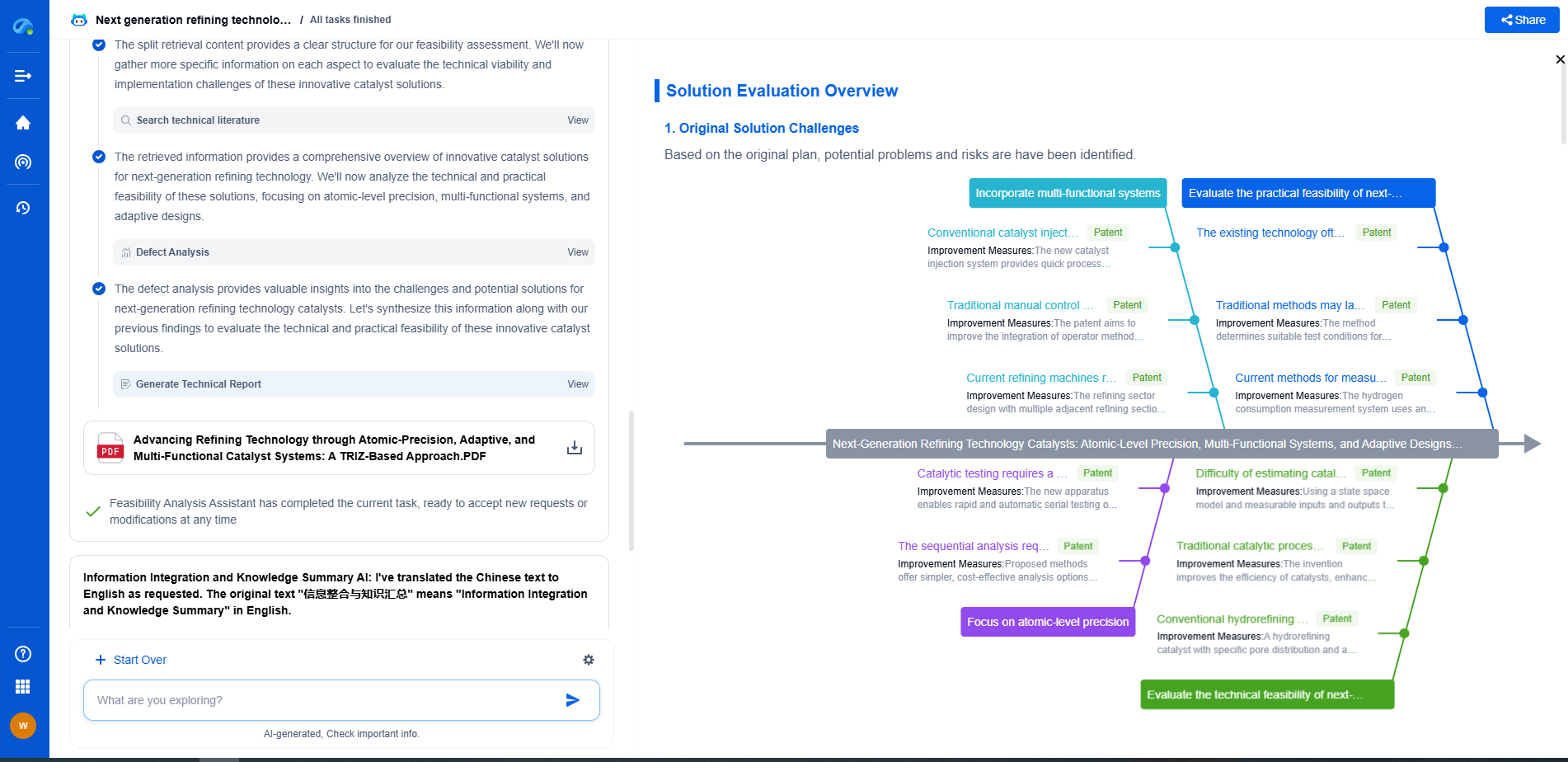Dielectric Constant vs. Permittivity: What's the Difference?
JUN 26, 2025 |
When delving into the realm of electromagnetism and material science, two terms often arise: dielectric constant and permittivity. These concepts are crucial for anyone dealing with materials and their interactions with electric fields. Although they are closely related, they are not identical. Understanding their differences and their roles can greatly enhance your comprehension of how materials behave in electrical contexts.
Defining Permittivity
Permittivity, denoted by the symbol ε, is a fundamental property of materials that measures how they respond to an applied electric field. It quantifies the ability of a material to permit the flow of electric field lines through it. In essence, permittivity determines how much electric charge a material can store when exposed to an electric field. The standard unit for permittivity is Farad per meter (F/m), and it is a crucial parameter in the equations describing the behavior of electric fields in materials.
Permittivity can be further divided into two categories: absolute permittivity and relative permittivity. Absolute permittivity refers to the permittivity of a material in a vacuum and is a constant denoted by ε₀. Relative permittivity, or the dielectric constant, is the ratio of the permittivity of a material to the permittivity of a vacuum. This brings us to our next point of discussion.
What is Dielectric Constant?
The dielectric constant, often represented as k or εr, is a dimensionless quantity that compares the permittivity of a material to the permittivity of free space (vacuum). It essentially describes how much better a material can store electrical energy compared to a vacuum. If a material has a high dielectric constant, it can store more energy from an electric field. This property is particularly important in applications such as capacitors, where material selection can influence the device's performance.
The dielectric constant provides insight into the material's polarizability, or how easily the material's molecules can be polarized in response to an electric field. This polarization, in turn, affects how the electric field propagates through the material.
Permittivity and Dielectric Constant: Key Differences
While permittivity and dielectric constant are closely related, understanding their distinctions is crucial:
1. Nature and Units: Permittivity is an absolute measure with units of Farad per meter, while the dielectric constant is a relative, dimensionless quantity.
2. Reference Point: Permittivity refers to the inherent property of a material, whereas the dielectric constant is a comparison to the vacuum permittivity.
3. Application Context: Permittivity is often used in theoretical and practical calculations involving electric fields and material responses, while the dielectric constant is more commonly used in engineering applications to compare material properties.
Applications and Implications
Both permittivity and dielectric constant play a pivotal role in various applications:
1. Capacitors: The ability of capacitors to store and release electrical energy is heavily influenced by the dielectric constant of the material used as the dielectric. Materials with high dielectric constants are preferred to increase capacitance.
2. Telecommunications: Permittivity affects the propagation speed of electromagnetic waves in materials, influencing the design of antennas and transmission lines.
3. Material Science: Understanding these properties aids in the design of new materials with desired electrical properties for use in electronics and other technologies.
In Conclusion
While permittivity and dielectric constant are related concepts, they serve different purposes in the study of materials and their interactions with electric fields. Permittivity is a fundamental property describing how materials interact with electric fields, whereas the dielectric constant is a derived, dimensionless value that provides a relative measure of this interaction compared to a vacuum. Together, they offer a comprehensive understanding of a material’s behavior in electrical applications, aiding scientists and engineers in designing and utilizing materials more effectively.
Empower Electromagnetic Innovation with Patsnap Eureka
From high-frequency antenna arrays and electromagnetic shielding to plasma propulsion and wave-based energy transfer, the electromagnetic domain sits at the core of next-generation technologies. Yet navigating its vast landscape of patents, research papers, and evolving technical standards can be time-consuming and complex.
Patsnap Eureka, our intelligent AI assistant built for R&D professionals in high-tech sectors, empowers you with real-time expert-level analysis, technology roadmap exploration, and strategic mapping of core patents—all within a seamless, user-friendly interface.
👉 Experience Patsnap Eureka today and transform how your team navigates the complexity of electromagnetic innovation.
- R&D
- Intellectual Property
- Life Sciences
- Materials
- Tech Scout
- Unparalleled Data Quality
- Higher Quality Content
- 60% Fewer Hallucinations
Browse by: Latest US Patents, China's latest patents, Technical Efficacy Thesaurus, Application Domain, Technology Topic, Popular Technical Reports.
© 2025 PatSnap. All rights reserved.Legal|Privacy policy|Modern Slavery Act Transparency Statement|Sitemap|About US| Contact US: help@patsnap.com

